Spread over a 45.568 km2 area of north-south oriented hilly terrain of Chakrashila and Baokhungri Hills, Chakrashila Wildlife Sanctuary is famous for Golden Langur, Paragliding Spot and Baokhungri Festival (Climbing of Baokhungri Hill). It was first notified a Reserve Forest on 26th October, 1966. On 14 July 1994, it was notified as Chakrashila Wildlife Sanctuary by the Govt. of Assam considering its floral, faunal and natural significance to protect, propagate and develop them. The sanctuary is the only protected area exclusively designated for the long-term preservation of the golden langur in the world.
The sanctuary is inhabitant of diverse faunal species including 20 mammal species, 109 species of avifauna, 13 amphibian species, 3 insect species, 10 reptile species such as snakes, lizards, turtles and 76 butterfly species. Some prominent mammal inhabitants of the sanctuary are Indian short-tailed mole, Indian flying fox, Bengal fox, rhesus macaque, Chinese pangolin, Asiatic jackal, and golden langur.
1. Recent Developments
- Proposed National Park Status: The Assam government has initiated steps to upgrade Chakrashila Wildlife Sanctuary to a national park to strengthen conservation efforts for the endangered golden langur (Trachypithecus geei). This proposal is under review by the National Board for Wildlife (NBWL) as of mid-2024.
- Golden Langur Conservation:
- A recent census (2023) reported a stable population of ~7,000 golden langurs in Assam, with Chakrashila being a critical habitat.
- The sanctuary now hosts over 600 golden langurs, a significant increase from previous decades due to community-led conservation.
2. Infrastructure & Eco-Tourism
- New Watchtowers and Trails: The Assam Forest Department added eco-friendly watchtowers and trekking routes in 2023 to promote responsible tourism.
- Community Involvement: Local NGOs like Nature’s Foster and the Assam Forest Department are training villagers as eco-guides to reduce human-wildlife conflict and boost livelihoods.
Chakrashila Wildlife Sanctuary Photo: View from Baukhungri Hill Top
Chakrashila Wildlife Sanctuary location
The Chakrashila Wildlife Sanctuary is located in the Kokrajhar district under BTR of Assam, India. Some adjoining southern areas of Dhubri district also falls within the sanctuary. The BTR (Bodoland Territorial Region) is the 6th Schedule Autonomous Council within the state of Assam, India.
The sanctuary mainly comprises a north-south oriented hilly terrain flanked by Dheer Beel on the southeastern side and Diplai Beel on the southwestern side.
The sanctuary is the southmost inhabitants for the golden langur which is an endangered endemic species found in western Assam and parts of Bhutan. The golden langur is the flagship species of the Chakrashila Wildlife Sanctuary and the mascot of BTR.
The Chakrashila Wildlife Sanctuary is approximately 6 km away from Kokrajhar town, about 219 km from Guwahati’s LGB International Airport and 68 km from Dhubri town.
Location, Area, Name
Latitude : 26°15′–26°26′N
Longitude : 90°15′–90°20′E
Altitude : The sanctuary elevation varies from 35 to 60 meters above mean sea level
Name : Chakrashila Wildlife Sanctuary
District : Kokrajhar and some adjacent southern areas of Dhubri District
Area : 45.568 sq. km.
Chakrashila Wildlife Sanctuary Google Map Location
Chakrashila Wildlife Sanctuary Map and Boundary
The boundaries of the Chakrashila Wildlife Sanctuary is surrounded by agricultural fields and villages in the foothills of Chakrashila and Baokhungri Hills on all sides except for the north. The surrounding villages of the sanctuary are mainly the habitat of the local communities namely Bodo, Rabha, Garo, Adivasi and Nepali.
- North: The Northern boundary of the sanctuary is marked by Assam SH14 Road from Kokrajhar to Bahalpur. The 7th Assam Police Battalion (APBN) Headquarters and the Chakrashila Wildlife Sanctuary guest house are located at Charaikhola, which is the northwesternmost point of the sanctuary’s starting point.
- West: The western boundary is bounded by many villages such as Harinaguri Pt-I, Haringuri Pt-II, Bhalukojhora, Harighola, Damodarpur Pt-I, Damodarpur Pt-II and Diplai Beel which is a picnic spot at the south-westernmost point.
- South: The southern boundary is surrounded by many villages such as Bandarpara, Abhayakuti, Salbari, Jornagra Pt-I, Jornagra Pt-II, Jornagra Pt-III, Tintila, Chakrashila Pt-I, Chakrashila Pt-II and Deer Beel at the east-southernmost point which is a picnic spot.
- East: The eastern boundary of the sanctuary is bordered by villages such as Kakrikhola, Pundibari Pt-I, Pundibari Pt-II, Mauriagaon Pt-I, Mauriagaon Pt-II, Daborgaon, Anujuli, Malsingpara and Deer Beel at the east-southernmost point.
The Central Government of India also notified an area ranging from 76.27 meter to 8.79 kilometre around the boundary of Chakrashila Wildlife Sanctuary in Dhubri and Kokrajhar districts and hereafter this area referred to as Chakrashila Wildlife Sanctuary Eco-sensitive Zone.
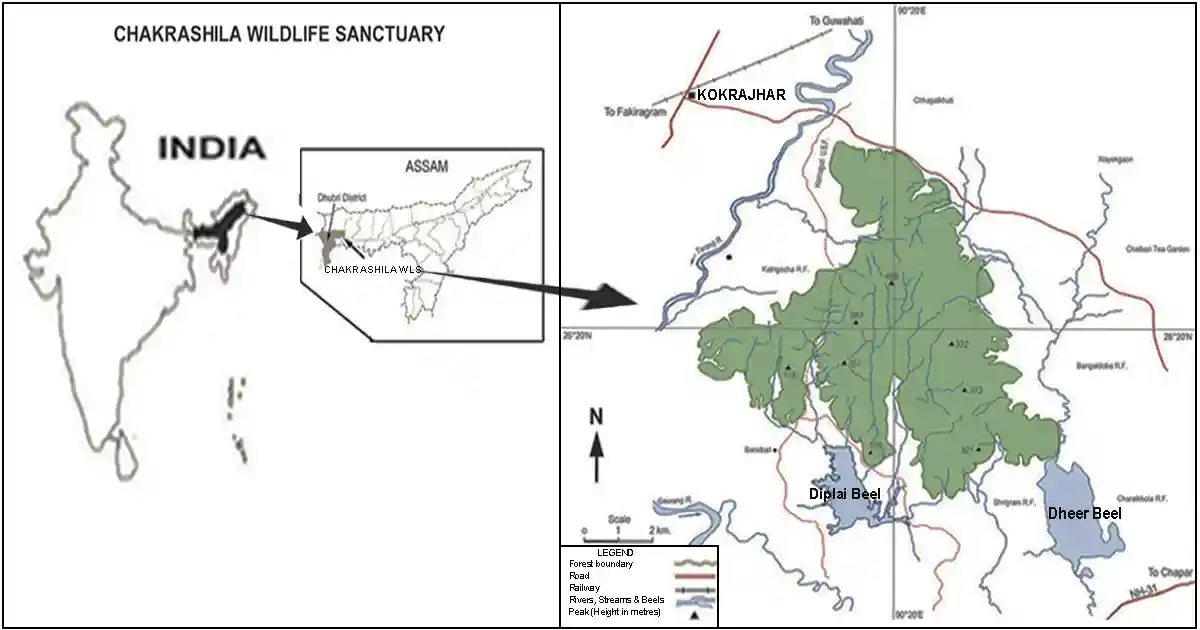
Chakrashila Wildlife Sanctuary Establishment
- Before gaining its wildlife sanctuary status, Chakrashila was recognized as the Chakrashila Hill Reserve Forest, initially declared as such through Notification No. FOR/SETT/296/60/440 dated October 26, 1966.
- It was officially declared a wildlife sanctuary by the Government of Assam to safeguard its ecological, floral, faunal and natural importance. The decision to protect, develop the wildlife sanctuary and its habitat in this region was made under the Wildlife (Protection) Act of 1972.
- The sanctuary’s establishment as Chakrashila Wildlife Sanctuary was finalized through Notification No. FRW-6/93/63, dated July 14, 1994 covering an area of approximately 45.568 square kilometers.
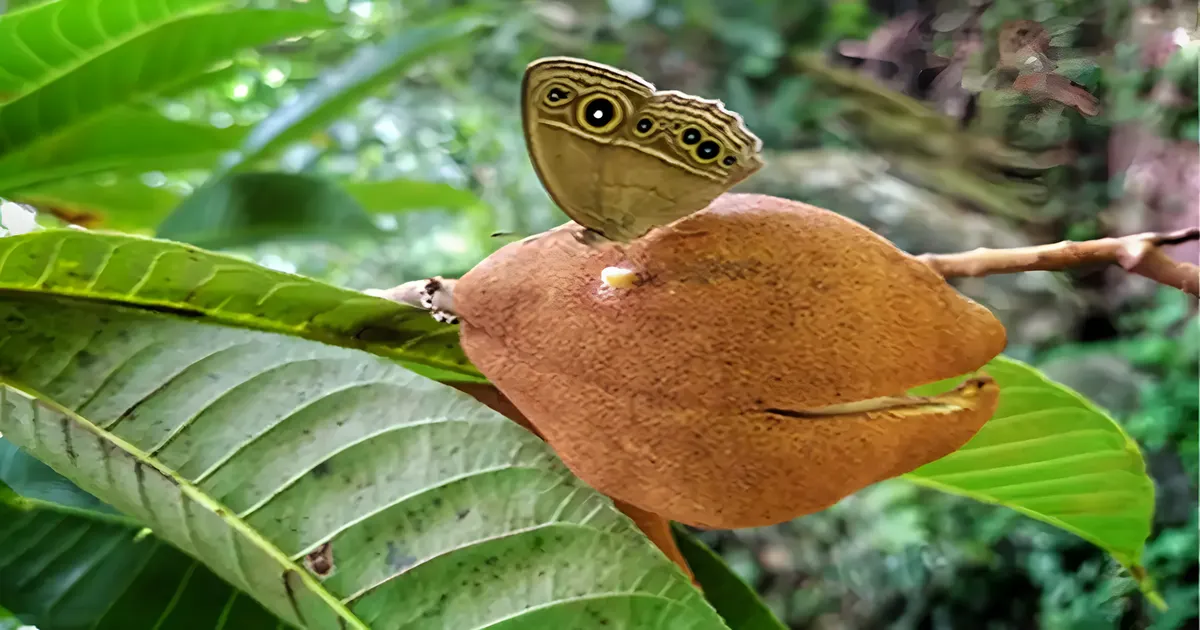
Geography of Chakrashila Wildlife Sanctuary
1. Terrain and Waterways: Chakrashila Wildlife Sanctuary boasts a sundry geographical landscape comprising both hilly terrains and flat expanses adorned with a variety of forest types. Scattered throughout the sanctuary this undulating forest are small springs that serve as vital water sources for its wild inhabitants. Four key streams within the sanctuary- Mauriagaon, Bhalukjhora, Bakuamari and Jornagra are surrounded by lush vegetation and dense tree cover meander over rocky formations and boulders. As they progress downstream, their bases tend to get slightly muddy and the water’s flow diminishes.
2.Vegetation Diversity: The predominant vegetation in the sanctuary is woodland with Sal (Shorea robusta) trees taking center stage comprised by a mix of deciduous, semi-evergreen and evergreen species. Interspersed among these trees are clumps of bamboo and cane. Grassy expanses are mainly located in the valleys and on the flat plains of the sanctuary. The forest ecosystem of Chakrashila can be categorized into several types including Assam Valley Semi-Evergreen Forests, Northern Secondary Moist Mixed Deciduous Forests, Moist Plain Sal Forests, Eastern Hill Sal Forests, and a second variant of Moist Plain Sal Forests.
Climate of Chakrashila Wildlife Sanctuary
The climate of Chakrashila Wildlife Sanctuary falls under the tropical moist category. Throughout the year, it witnesses rainfall ranging from 2000 mm at its least to a substantial 4000 mm at its peak. The warmth of summer sees temperatures climbing up to 30 degrees Celsius. However, winter brings a sharp contrast as the mercury drops to a chilly 8 degrees. The heaviest downpours are usually occurred during July and August. The place feels quite humid, especially in summer with humidity often around 86%.
Biodiversity of Chakrashila Wildlife Sanctuary
The Chakrashila Wildlife Sanctuary is in a place with hills and plain tracks with different types of forest housing endemic and endangered golden langur (Trachypithecus geei) and many other types of animals that make it a unique and important protected area.
1. Floral Diversity: The sanctuary’s forest area has more than 57 different tree species, 34 types of small trees, 42 species of shrubs, 18 varieties of under shrubs, 58 types of herbs, 27 kinds of grasses. It also has 11 species of epiphytes plants that grow on other plants and 27 species of ferns related plants. The sanctuary has different kinds of forests with lots of different types of trees like sal, bahera, bhelu, bhelkar, gamari, kum, kanchan and simul. It also has many shrubs, herbs, bamboo and grasses that animals including the golden langur like to eat.
The Chakrashila Wildlife sanctuary also has medicinal plants, various lichens, ferns and orchids etc. that exists in the forest as well.
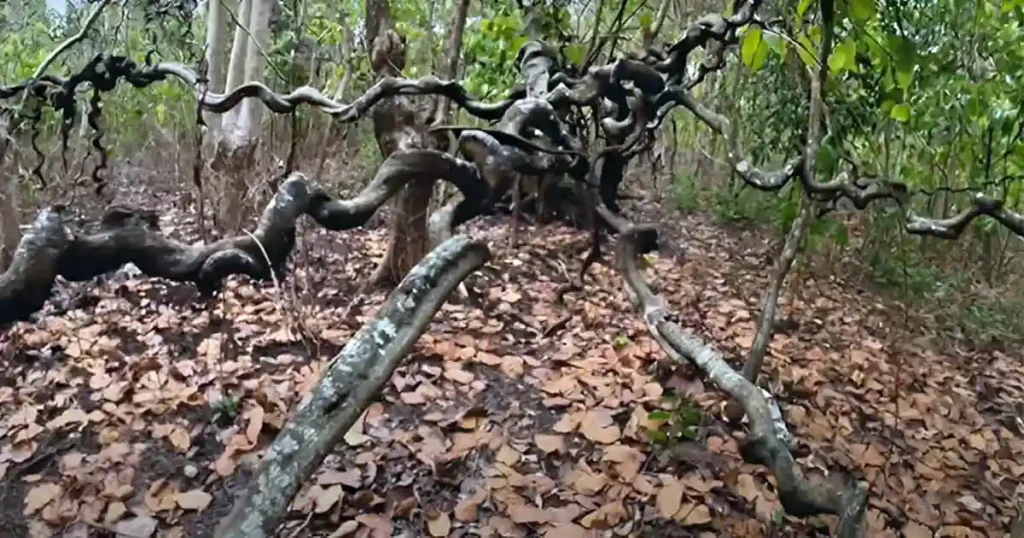
2. Faunal Diversity: Chakrashila Wildlife Sanctuary is inhabitant to many animals like 20 kinds of mammals, 13 types of amphibians and 10 different reptiles. Some notable animal inhabitant in the sanctuary includes the golden langur, Rhesus macaque, barking deer and leopard cat.
3. Golden Langur Diversity: The golden langur, scientifically known as Trachypithecus geei, ranks among the top 25 most threatened primates worldwide. The Chakrashila Wildlife Sanctuary is the only protected area exclusively dedicated to the long-term preservation of the golden langur and holds a special place in the conservation world of golden langur. As per survey of the golden langur conducted from December 2016 to March 2017 in the Chakrashila Wildlife Sanctuary recorded 558 golden langurs across 72 distinct groups.
4. Amphibians, Reptiles and Invertebrates: Various amphibians, reptiles and invertebrate species are found in the Chakrashila Wildlife Sanctuary.
Amphibians includes Common Indian toad, Ornate narrow-mouthed frog, Painted frog, Balloon frog, Indian bullfrog and Jerdon’s bullfrog, Skittering frog, Long-tongued and bright frogs, Reed frog, Terai cricket frog, small cricket frog and Terai tree frog.
Reptiles includes Common Garden lizard, Bowring’s barak gecko, White-spotted stream lizard, Multifaceted skink, Peacock soft-shelled turtle, Elongated tortoise, Common bronze-back tree snake, brown whip snake, Banded krait and Indian rock python.
The invertebrate species available in the Sanctuary are Various molluscs like Cyclophous piarsoni, Brotia costula and Paludomus conica, Red stream crab, Large earthworm known as Eutyphoeu gigas.
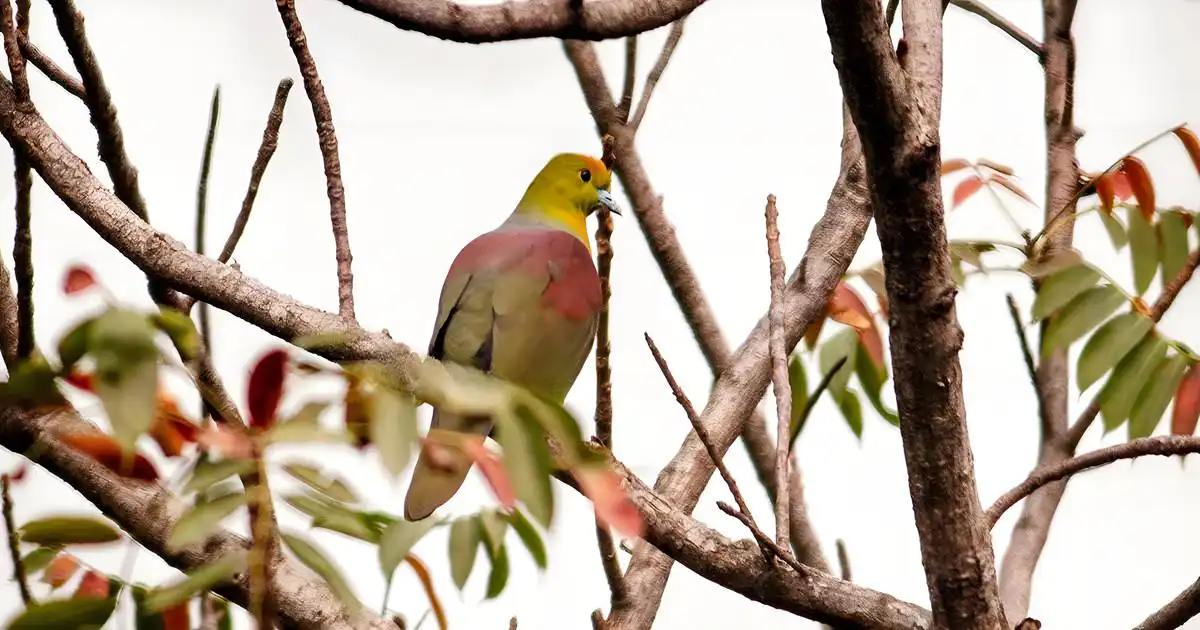
5. Avian Diversity: The lush surroundings of Chakrashila wildlife Sanctuary extend a perfect habitat for a wide variety of avifauna. The sanctuary has inhabitant of 109 bird’s species, 3 insects’ species and 76 species of butterflies.
The wetland areas of Chakrashila wildlife Sanctuary come alive with the graceful presence of waterbirds like little cormorants, large egrets, intermediate egrets, little egrets and cattle egrets. Grey herons and Indian pond herons also make appearances, while the striking lesser adjutant stork and the distinctive Asian openbill stork stand out among the crowd.
The sanctuary’s ponds and lakes such as Diplai Beel, Dheer Beel extends a home to a variety of duck species including gadwalls, Eurasian wigeons, Baer’s pochards, common teals, mallards, northern pintails, northern shovelers and red-crested pochards. The raptors on the other hand grace the skies with their majesty with ospreys, Eurasian sparrowhawks, greater spotted eagles, black kites and the remarkable red-headed vulture making occasional appearances.
Amidst all this avian splendor ground-dwelling birds such as lapwings and plovers add charm to the landscape of Chakrashila Wildlife Sanctuary.
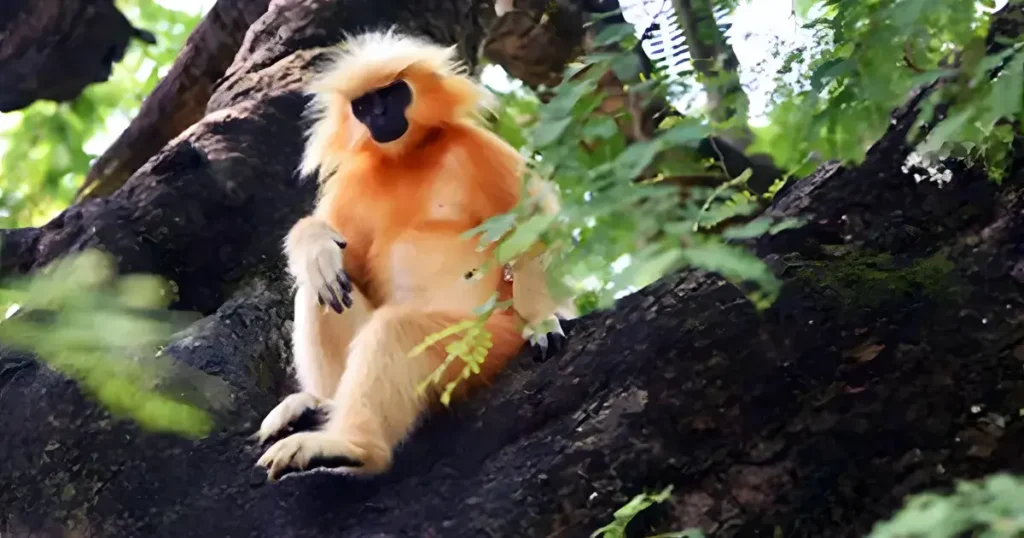
Places to visit within Chakrashila Wildlife Sanctuary
1. Diplai Beel Eco-Tourism Park
Diplai Beel is located in the south-westernmost point of Chakrashila Wildlife Sanctuary in Kokrajhar district of Assam. Covering an area of 4.14square kilometers it is a large natural wetland. Having varieties of local birds as well as migratory, Diplai Beel is the Assam’s first Bird Sanctuary (Wild Sanctuary) and also a picnic spot. This lake is situated approximately 22kilometers south of Kokrajhar town and 13kilometers from the 31st National Highway at Salkocha. The western side of the lake is bordered by the Boro, Rava and Garo communities, while on the northeastern side, it is flanked by hills covered in lush forests providing a habitat for the elusive Golden Langur (Mwkra Gufur).
After the creation of Bodoland Territorial council (BTC), Govt. started working on turning Diplai Beel into an Eco-Tourism Park. Diplai Beel is a beautiful place connected to Dakra Beel and through a long channel to the Brahmaputra River. It is a lake of rich aquatic biodiversity, a spot of eco-tourism and scientists studying water ecosystems. Diplai Beel coordinates at 26° 17’31” North and 90° 19’14” East.
Best Time to Visit Diplai Beel: The best time to visit Diplai Beel is during the winter months from November to February when the weather is cooler making it ideal for birdwatching and enjoying the natural beauty of the area.
To reach the Diplai Beel Eco-Tourism Park Beel follow Google Map.
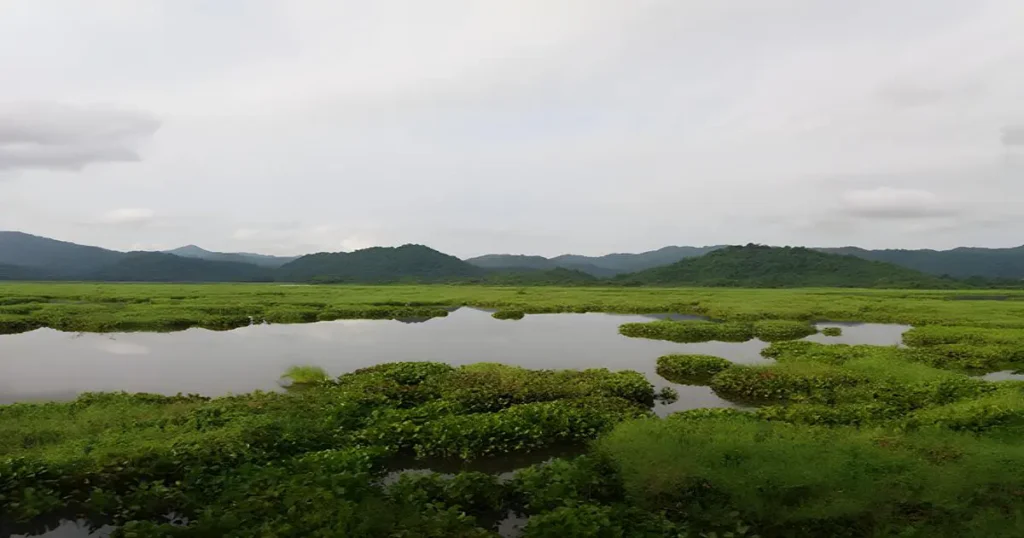
2. Dheer Beel Picnic Spot
Dheer Beel is located in the Dhubri District of Assam. Covering an area of 577 hectares it is situated in the east-southernmost point of Chakrashila Wildlife Sanctuary. Most of the Dheer Beel’s surface is clear with floating vegetation consisting of water hyacinth scattered over the lake. It coordinates 26.282°N, 90.380°E. The Beel is connected to the Brahmaputra River through a narrow channel crossing NH31.
Dheer Beel is abundant in water life including fish and it also a great place for a picnic as well where you can spot various bird species. The Beel is owned by the Assam Fisheries Development Corporation (AFDC) and has been leased to a private individual for fishing through a tender process. The total value of fish catch in Dheer Beel is approximately Rs.53.22 lakh based on the 2022 price and the fish harvest was estimated to be 85tone with the value Rs.56.30 lakh.
Best Time to Visit Dheer Beel: The best time to visit Dheer Beel is from November to February. It is cooler and perfect for birdwatching as many migratory birds come here during these months. The clear skies and pleasant temperatures make it great for exploring the rich aquatic life and enjoying the lake’s natural beauty.
To reach the Dheer Beel follow Google Map.
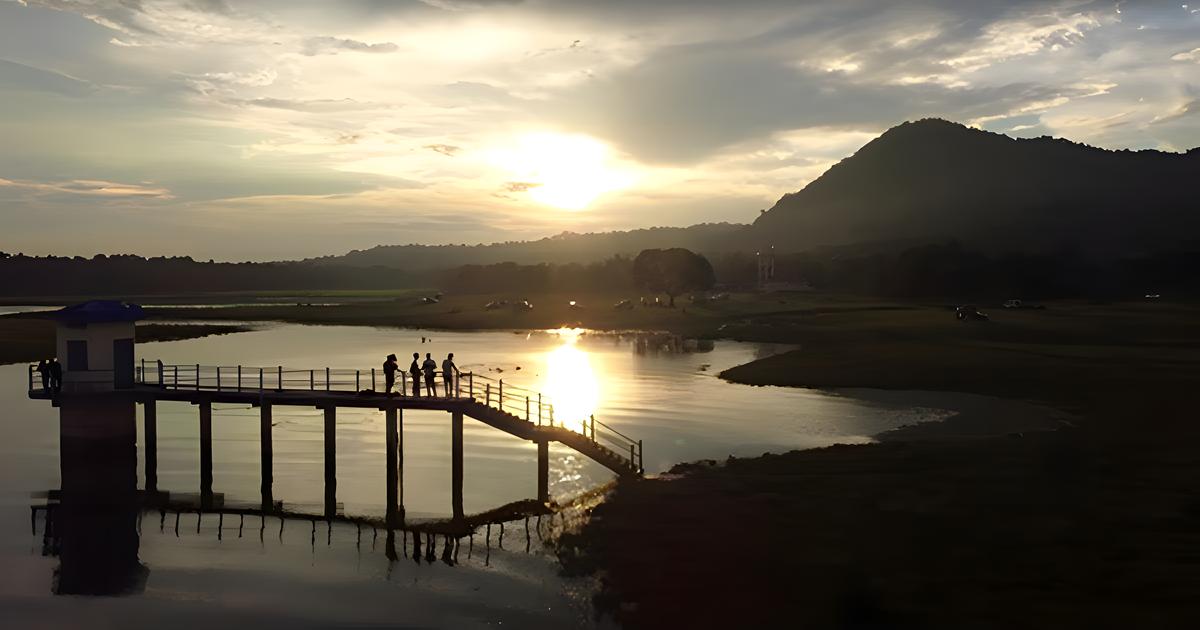
3. Paragliding Spot
Chakrashila Wildlife Sanctuary has three paragliding take-off spots each with its designated landing ground:
- The first one is situated at Baokhungri Hill’s Peak with a designated landing ground at Baokhungri Festival Playground.
- The second spot is located at Ontaigufur Dangdhufur hills within Chakrashila Wildlife Sanctuary just north of Damodarpur Shiv Mandir with a designated landing ground at Damodarpur Pt-I Playground.
- The third paragliding take-off location is on Chakrashila Hills, north of Dheer Beel with a designated landing ground at Dheer Beel Playground.
As an adventure sports activity paragliding in Baokhugri was first started at the Baukhungri festival in 2013 by the Tourism department of the Bodoland Territorial Council (BTC) Govt and received a positive response from the public. Following this success, the BTC administration expanded paragliding activities to various locations within the Chakrashila Wildlife Sanctuary.
In 2019 from November 10 to 15, the first Bodoland International Paragliding Accuracy Championship-2019 was held Dangdupur Hill in Chakrashila Wildlife Sanctuary organised by the Tourism department of Bodoland Territorial Council (BTC) administration.
In the championship, 68 participants from 11 countries including India showcased their paragliding skills. Among the 22 foreign participants from China, Korea, Indonesia, Nepal, Japan and Taiwan including four women, Indonesia secured the first position in both the male and female categories. India, the host country was represented by 46 participants from various states.
4. Waterfalls
Chakrashila Wildlife Sanctuary has some small waterfalls within its foothills. You can visit the waterfalls such as Jiri Waterfalls, Daokharaja Waterfalls situated in the thick jungle of Baokhungri and Chakrashila foothills. In the summer, you can have a refreshing bath in these waterfalls to cool off from the hot 33 degrees Celsius weather. To visit these places follow google map.
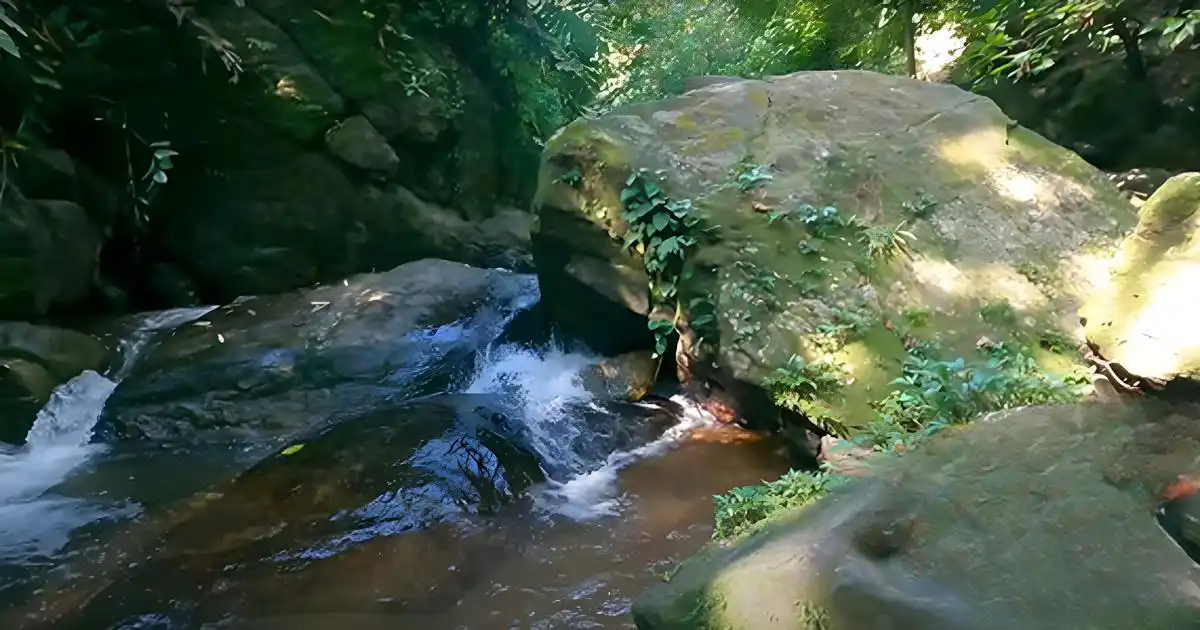
5. Baokhungri festival
Baokhungri Festival is an adventure and festivities celebrated on the auspicious day of Sankranti, a day before Bwisagu (Bihu) on the foothills of Chakrashila Wildlife Sanctuary. The Baokhungri festival held for 3 days from the last day of Chaitra month, and 1st, 2nd date of Baisakh month of Bangla calendar which falls in mid-April.
Traditionally Baokhungri Festival was traditionally known as Baukhungri Hajw Gakhwnai (Trekking of Baukungri Hill) later the tourism department of BTC administrative started grandly organizing as annual Baokhungri Festival.
Earlier it was celebrated in a traditional way by the Bodos. In present time, thousands of people throng and climb the Baukungri peak welcoming the Bwisagu festival with festivity mood irrespective of caste, creed and religions.
During the Baokhungri Festival many programmes like trekking on Baokhungri Hills situated within Chakrashila Wildlife Sanctuary, ethnic food festival, cultural show, indigenous sports, marathon race, paragliding etc. held. This festival attracts many visitors, promotes the local tourist spots and is also extends a trade and commercial affair.
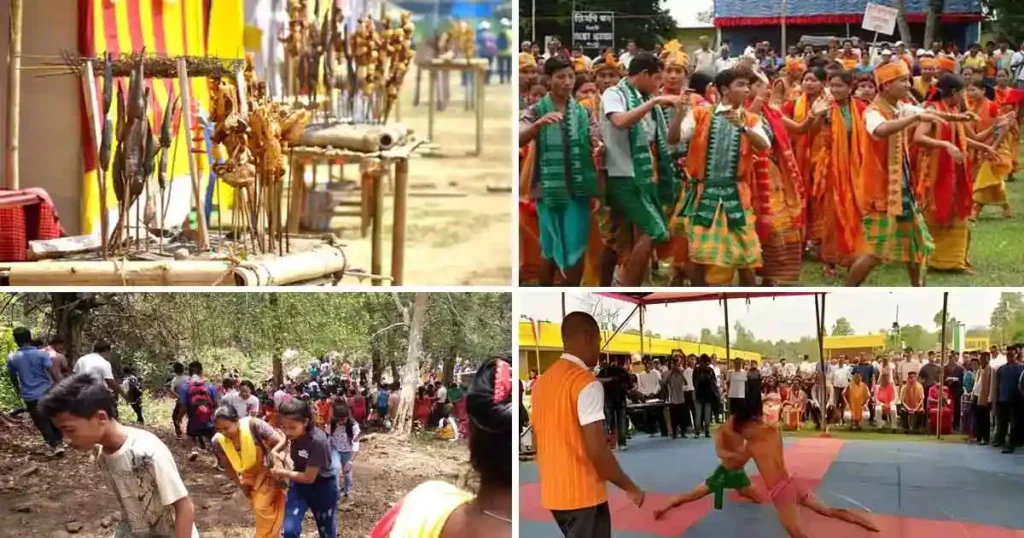
Conclusion
The Chakrashila Wildlife Sanctuary, situated in Assam spans 45.568 sq. km of hilly terrain and is renowned for its endangered Golden Langur, paragliding opportunities and the Baokhungri Festival. It was designated a wildlife sanctuary in 1994 considering its floral, faunal and natural significance to protect and develop them. The sanctuary has 20 mammal species, 109 avian species, 13 amphibians, 3 insect species, 10 reptile species and 76 butterfly species. Notable mammals include the golden langur, Indian flying fox, and Asiatic jackal. The sanctuary rich in various tree species and medicinal plants. Visitors can explore Diplai Beel Eco-Tourism Park, Dheer Beel Picnic Spot and enjoy paragliding and waterfalls. The annual Baokhungri Festival promotes trekking, cultural events, ethnic foods and indigenous sports.
FAQ
1. What animals are in Chakrashila Wildlife Sanctuary?
Chakrashila Wildlife Sanctuary is famous for Golden Langur and is the only protected area exclusively designated for the long-term preservation of the golden langur in the world. The sanctuary is inhabitant of diverse faunal species including 20 mammal species, 109 species of avifauna, 13 amphibian species, 3 insect species, 10 reptile species such as snakes, lizards, turtles and 76 butterfly species. Some prominent mammal inhabitants of the sanctuary are Indian short-tailed mole, Indian flying fox, Bengal fox, rhesus macaque, Chinese pangolin, Asiatic jackal, and golden langur.
2. How to reach Chakrashila Wildlife Sanctuary?
The LGBI Guwahati is nearest airport 263km from the Chakrashila Wildlife Sanctuary, by road 269 kms from Guwahati City, 70 kms from Dhubri, 50 kms from Bongaigaon and 7 kms from Kokrajhar.
3. What is the history of Chakrashila Wildlife Sanctuary?
Chakrashila Wildlife Sanctuary initially declared as Chakrashila Hill Reserve Forest through Notification No. FOR/SETT/296/60/440 dated October 26, 1966. The sanctuary was establishment as Chakrashila Wildlife Sanctuary through Notification No. FRW-6/93/63, dated July 14, 1994 covering an area of approximately 45.568 square kilometers. It was officially declared a wildlife sanctuary by the Government of Assam to safeguard its ecological, floral, faunal and natural importance. The decision to protect, develop the wildlife sanctuary and its habitat in this region was made under the Wildlife (Protection) Act of 1972.
4. Why is Chakrashila famous?
Chakrashila Wildlife Sanctuary is famous for Golden Langur, Paragliding Spot and Baokhungri Festival (Climbing of Baokhungri Hill). It was first notified a Reserve Forest on 26th October, 1966. On 14 July 1994, it was notified as Chakrashila Wildlife Sanctuary by the Govt. of Assam considering its floral, faunal and natural significance to protect, propagate and develop them. The sanctuary is the only protected area exclusively designated for the long-term preservation of the golden langur in the world.
You May Also Like
- Sonai Rupai Wildlife Sanctuary
- Bornadi Wildlife Sanctuary
- Nameri National Park
- Bura Chapori Wildlife Sanctuary
- Raimona National Park
References
- Ministry of Environment, Forest and Climate Change Notification. moef.gov.in
- Chakrashila Wildlife Sanctuary. wikipedia.org
- Conservation Status of the Golden Langur Trachypithecus geei in Chakrashila Wildlife Sanctuary, Assam, India. researchgate.net
- Status and Conservation of Golden Langur in Chakrashila Wildlife Sanctuary, Assam, India. asbb.assam.gov.in
- Chakrashila Wildlife Sanctuary. dhubri.assam.gov.in

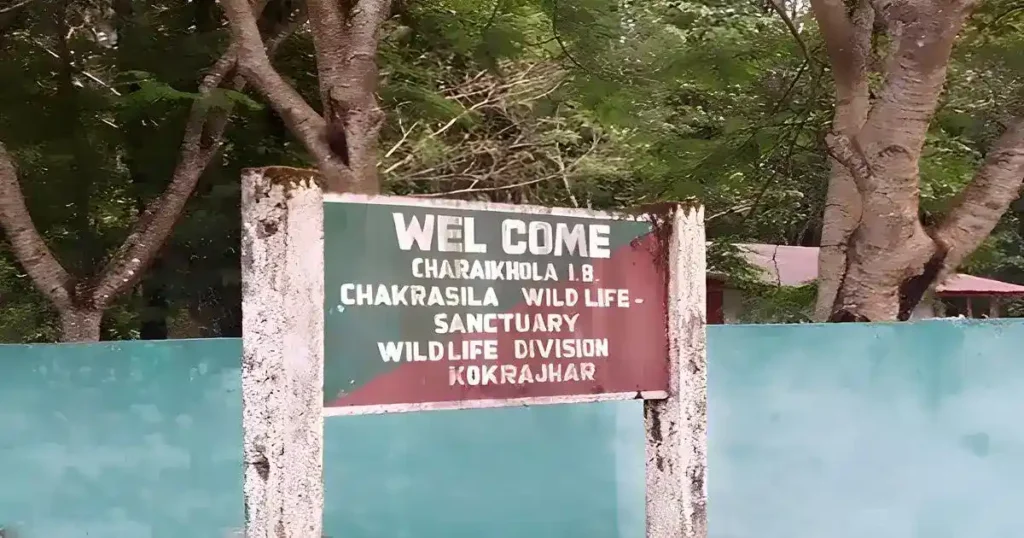
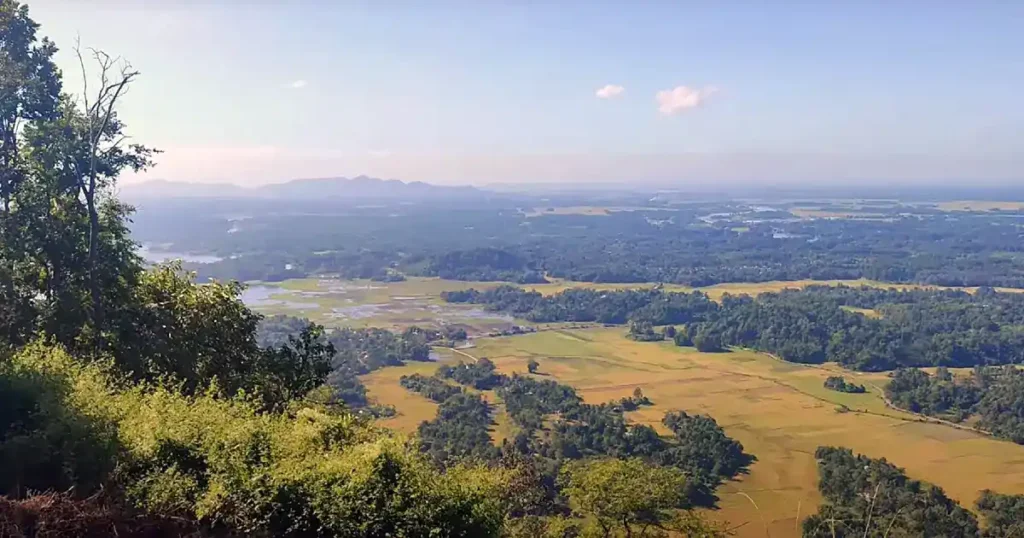
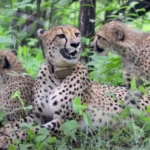

2 thoughts on “Chakrashila Wildlife Sanctuary”